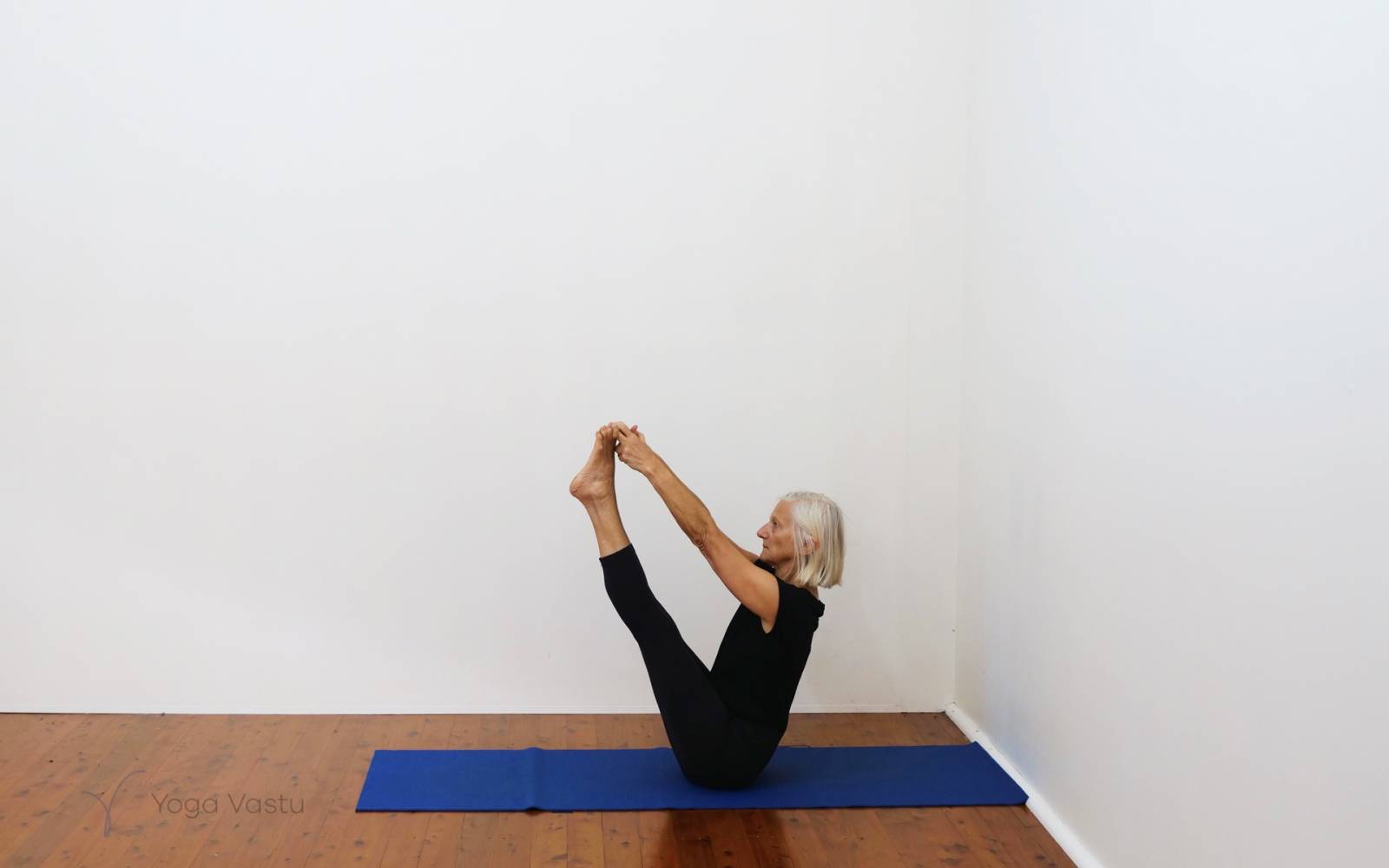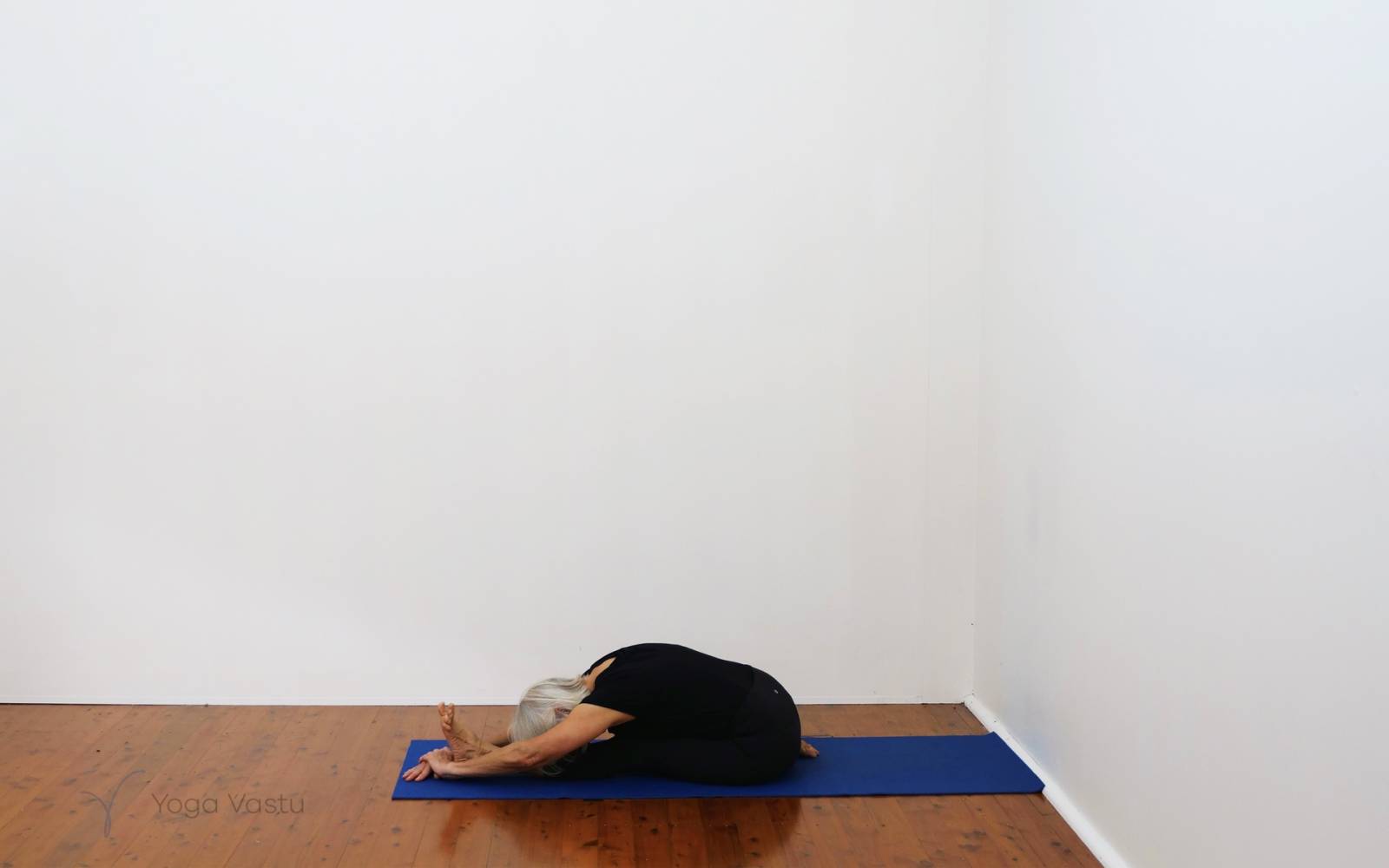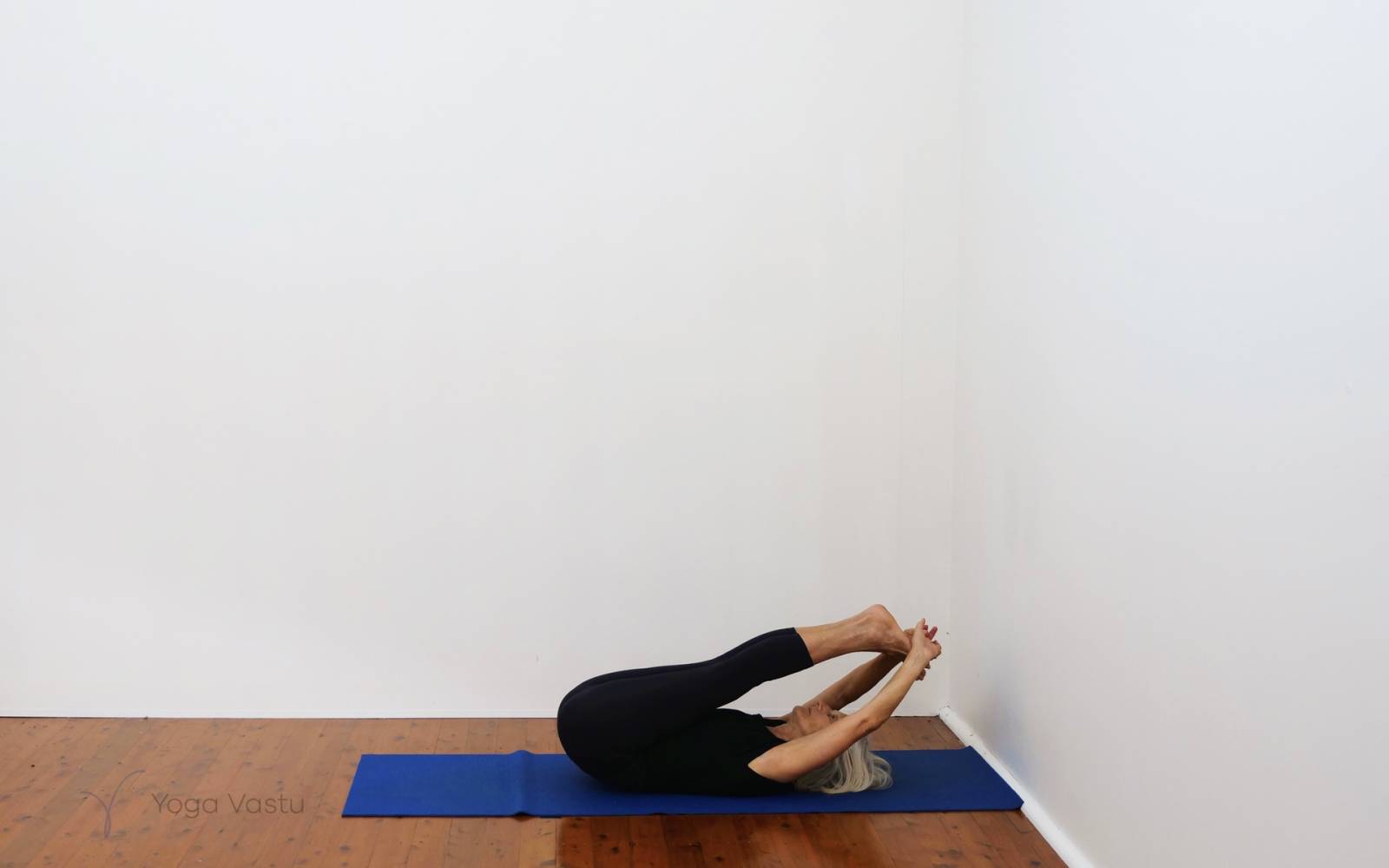This is a more dynamic sequence, in which the student is presented with a wide range of standing and sitting forward bends with variations. This will be suitable for anyone who is short on time and wishes to jump straight into the practice, as well as for those who don’t need to warm up too much in advance.
We will start off in Supta Virasana to bring energy into the front of our legs. Since this will be a more dynamic class with a very short warm-up stage, it’s best to start off with as little support as you can (use a folded blanket instead of a bolster): this will help you achieve a more wholesome stretch in the quadriceps and will make this pose more invigorating than the variation we use in restorative classes. If Supta Virasana is too hard on your knees, you can replace this pose with Supta Baddha Konasana.
After a few minutes in this supine position, we will go into Virasana Forward to release any tension we might have accumulated so far. Then, to even out the action in the front of our legs, we will stand up for Uttanasana. Try to avoid bending your knees as you practise this pose today. If you lack flexibility, you can place blocks or any other support under your hands: the main thing to work towards is extending the backs of the thighs as much as possible.
We will then move on to several variations of Adho Mukha Svanasana. First, we will do this with our heels to the wall and then we will turn to face the opposite direction and do the pose with our feet together and the thumb and index finger placed against the wall. To further stretch the hamstrings, we will also be doing the one-legged variation of Dogpose: Eka Pada Adho Mukha Svanasana. As you do this latter, make sure you keep your body steady: stay grounded through your heel and hands, and don’t let your hips twist to the side as you lift your leg up.
Next, we will do Utthita Hasta Padangusthasana 1 with the foot of the lifted leg pressed against the wall. Make sure to maintain your Tadasana line as you stand in this pose. Use the wall support to steady yourself and help you focus on extending upwards through the crown of your head.
As our final standing forward bend today we will be doing Parsvottanasana with the big toe of the front foot pressed against the wall. As you fold forward, observe any tightness in your legs and redirect your mental energy towards releasing it. An important thing to remember today is that the state of the mind plays a big role in the quality of our practice: if our thoughts are passive, it will be more difficult to get into the pose.
Finish the standing pose section by taking a few breaths in Tadasana before going into Urdhva Prasarita Eka Padasana (standing splits) done two ways. If such a deep stretch is not an option, you can stay a few moments in Uttanasana instead.
Before going into the seated section of the class, we will do a couple of inversions (Adho Mukha Vrksasana and Salamba Sirsasana), practising going up and coming down using different legs. We will do the one-legged variation in Sirsasana as well so as to further consolidate the stretching action in the hamstrings.
Since our legs will be warmed up quite substantially by the time we get to the seated part of the class, we will be mixing up the sequence with some fairly advanced forward bends, such as Ubhaya Padangusthasana and Urdhva Mukha Paschimottanasana. To make this part of the practice more balanced, we will be doing some neutral poses in-between the more strenuous ones: for example, taking frequent breaks in Virasana or Dandasana so as to release any accumulated tension.
There will be no cool-down session in this particular class. We will leave this part to your own discretion. A good way to finish off would be by doing a simple cross-legged forward bend followed by Pawanmuktasana or Viparita Karani and, finally, either Savasana or Supta Swastikasana as a way of letting go completely and taking some time to reflect on the benefits of the class.
Illustrated sequence of video
Download and print the free illustrated sequence of this video.
Video stills from this sequence

























